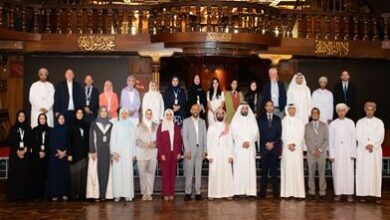Rise in Kuwait workforce driven by expats, decline seen in citizens’ participation

The Central Bureau of Statistics’ report for the first quarter of 2025 revealed that Kuwait’s local labor market has grown by 3 percent compared to the same period last year, bringing the total workforce (excluding the family sector) to 2.211 million workers. This marks an increase of 64,403 individuals over the 12-month period.
Despite the overall growth, the national (citizen) workforce saw a decline of 7,334 workers — a 1.6 percent drop — bringing their total to 450,233, reports Al-Rai daily.
Kuwaitis now make up only 20.4 percent of the total workforce. However, the report noted a positive trend in educational attainment, as 54.4 percent of Kuwaiti workers hold university degrees, compared to just 8.1 percent with only a high school diploma.
Kuwaiti citizens remain heavily concentrated in the government sector, accounting for 83.8 percent of public sector employees, though their total dropped to 377,232.
In the private sector, Kuwaitis represent just 4.2 percent of employees. Of those employed privately, 43.9 percent are clustered in three sectors: financial and insurance activities (19.4 percent), wholesale and retail trade (12.9 percent), and accommodation and food services (11.6 percent).
Their presence is minimal in other sectors like water and sanitation, waste management, energy, agriculture, and the arts and recreation fields.
Expatriate employment grew by 71,737 workers — a 4.2 percent rise — between March 2024 and March 2025. Indian nationals remain the largest expatriate group, with 572,300 workers, followed by Egyptians (despite a decline of 4,224). The number of Nepalese workers surged by 13,814, replacing a portion of the declining Filipino domestic workforce.
In terms of distribution, expats dominate the private sector (66.3 percent of total expat workers) and make up 29.7 percent of the family sector, which includes domestic labor.
Expatriates with intermediate-level certificates formed the largest educational group (48.9 percent), while only 15 percent of them had university degrees.
Breakdown of labor distribution — Private Sector: 58.7% of total labor force; Domestic (Family) Sector: 25.2%; Government Sector: 16.1%; Citizens in Government Jobs: 79.1%; Citizens in Private Sector Jobs: 4.2%;
Net Workforce Movement Over the Year
Increase — India: +32,802, Nepal: +13,814, Bangladesh: +11,660, Sri Lanka: +4,721, Jordan: +965, Syria: +814
Decrease — Kuwait: -7,334, Egypt: -4,224, Philippines: -2,057, Pakistan: -1,554













